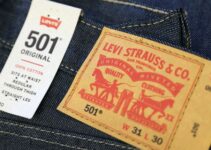Toys R Us is a baby products, toys, and clothing retail American multinational company. Charles Lazarus founded the baby products and toys manufacturing company in 1948. Today, we’ll discuss the Ansoff matrix of Toys R Us; and its four growth matrix strategy analysis quadrants; market penetration, market development, product development, and diversification growth strategy of Ansoff matrix business example.
Elements of Market Penetration Strategy of Toys R Us
- Offering a great variety of toys and playful games for kids
- Retail toys stores marketing
- Unique and creative products, toys, and games for children
- Running TV advertisement commericals to target kids and parents
- Partnering up with retail store brand to give a brand exposure to its products
- Offering a great retail in-store experience to increase the conversion rate
Top Selling Markets and Geographical Regions of Toys R Us
- Dubai
- Italy
- China
- Japan
- USA
Latest and Best Selling Collection of Toys R Us
- Teenage Mutant
- TonieBox
- Play-doh kitechen busy cheff
- Miniverse
- X-shot skins 4 blaster
- Xceler8: Lamborghini
- Disney Junior Minnie Mouse Sweets and Treats
- Lego City Freight Train
- Bitzee
- Barbie Dreamhouse
The Ansoff matrix of Toys R Us would analyze the four growth matrix strategy analysis quadrants; market penetration, market development, product development, and diversification. Here’s the Toys R Us Ansoff matrix company example as follows;
Ansoff Matrix of Toys R Us
Let’s discuss the four growth matrix strategy analysis quadrants of the Ansoff matrix of Toys R Us as Ansoff matrix company example; they’re as follows;
Market Penetration Strategy of Toys R Us
The market penetration quadrant in the Toys R Us Ansoff matrix business example as a growth matrix strategy has the lowest risk in the growth strategy. It is because here the children’s toys brand sells its current products and services in the existing customer market. However, the children’s toys market is growing, and the market penetration growth strategy is possible.
I-Diverse Portfolio
Toys R Us offers a well-diversified portfolio comprising of wide range of toys for all ages of children with different types of characters and brands. Such a vast variety of baby products and toys helps the company to penetrate the customer market and offer its current products to new segments of the market.
II-Discounts
Toys R Us provides discounts and free delivery service to customers to attract the attention of new customers and retain the existing ones. It is a great market penetration strategy to increase the sale of existing stock to the new segments of the market.
III-Offers & Deals
Toys R Us introduces seasonal offers, bundle deals, and packages to further penetrate the existing market and increase the sale of current product stock.
IV-Marketing & Advertisement
In order to create interest in the existing customer market; Toys R Us runs various types of marketing and advertisement campaigns. It helps the company to target new customers in the same market and sell its existing products.
Market Development Strategy of Toys R Us
The market development quadrant in the Toys R Us Ansoff matrix business example as the growth matrix strategy has a bit higher risk than the market penetration strategy. It is because here you expand your children’s toys market and offer your current product portfolio in the new market. However, you don’t know the culture and response of the new market; that’s what makes it riskier.
I-Global Market Expansion
Toys R Us has established a network of over 1500 stores in 35 countries across the world. The toy company needs to further expand its business and market by opening up new stores in the new regional markets. It would help the company to amplify its sales, revenue, profitability, and business network and influence.
II-Alliance & Partnership
Toys R Us has established partnerships and alliances with Macy’s, Amazon, WHP, and others. It allows the company to increase the exposure of its products in the new retail stores. More product exposure, helps the company to increase sales.
Product Development Strategy of Toys R Us
The product development quadrant in the Toys R Us Ansoff matrix business example as the growth matrix strategy has a higher risk than the market penetration strategy. It is because here you launch new children’s toys for the existing customer market. You would have to run new marketing and promotional campaigns for the new product and it makes it riskier.
I-R&D
Toys R Us invests a significant amount of capital resources in research and development for the production of new toys and baby products. The objective is to improve the quality of existing and new toys and baby products.
II-New Baby Toys
Toys R Us develops new toys and baby products based on the new characters and action figures. The objective is to attract the attention of new customers and retain the existing ones. Without new products and no improvement in the existing products, there is no growth for the company.
Diversification Strategy of Toys R Us
The diversification quadrant in the Toys R Us Ansoff matrix business example as a growth matrix strategy has the highest risk growth strategy of all three previous growth strategies. It is because here you launch a new retail children’s toys product or service in a new customer market. You won’t know how your new market will react to the new items.
I-Horizontal Diversification
Toys R Us has successfully expanded its business, divisions, and product portfolio over the years. The baby products and toys brand plans to do the same in the upcoming years. The company has the resources and expertise to deal with the potential risk factors.
Conclusion: Toys R Us Ansoff Matrix Company Example | Ansoff Growth Matrix Strategy Analysis
After an in-depth study of the Ansoff matrix of Toys R Us; we have realized that Toys R Us is the world’s leading retail chain baby products and toys brand. If you are learning about the Toys R Us Ansoff matrix company example; then you should keep in mind the abovementioned growth matrix strategy quadrants; market penetration, market development, product development, and diversification.

Ahsan is an accomplished researcher and has a deep insight in worldly life affairs. He goes Live 3 days a week on various social media platforms. Other than research writing, he’s a very interesting person.


